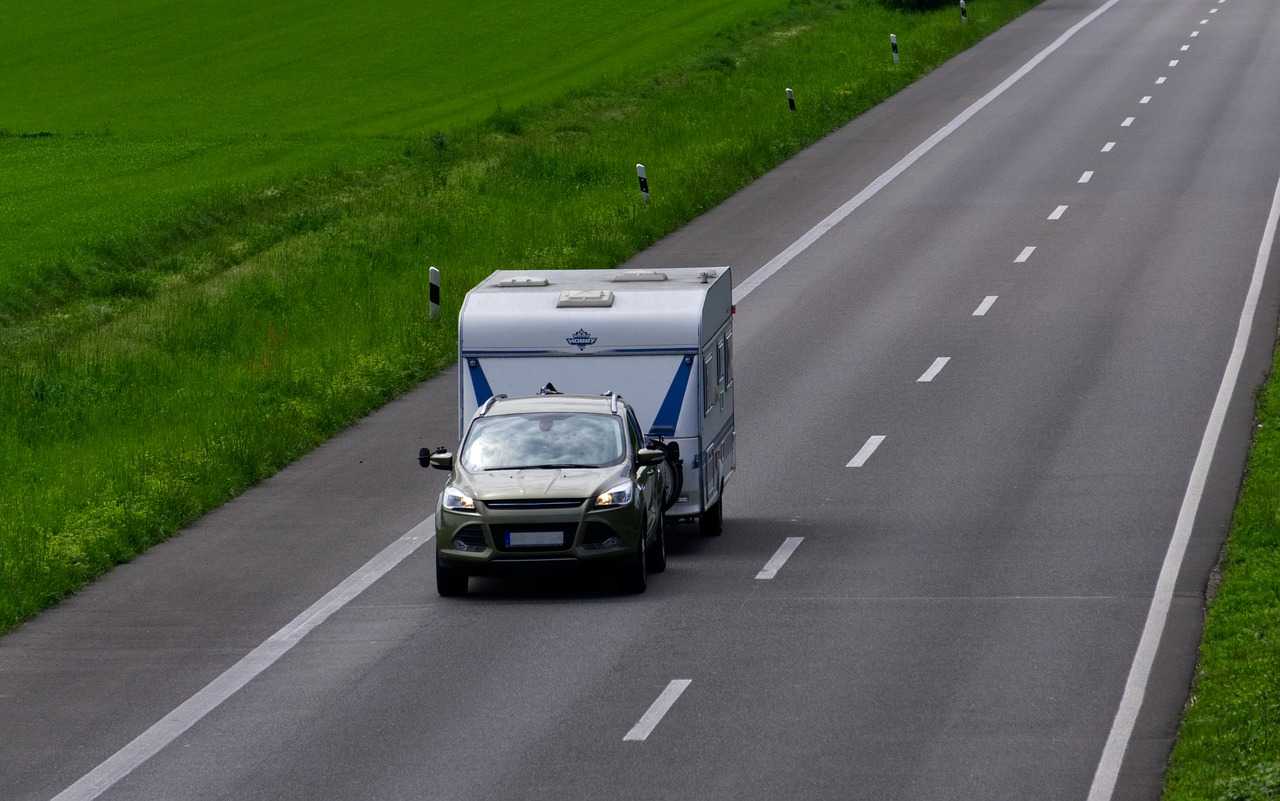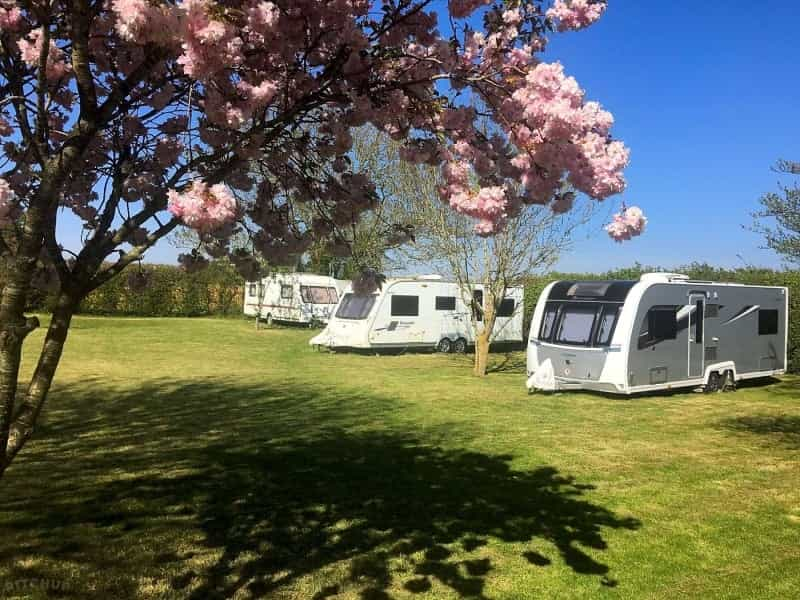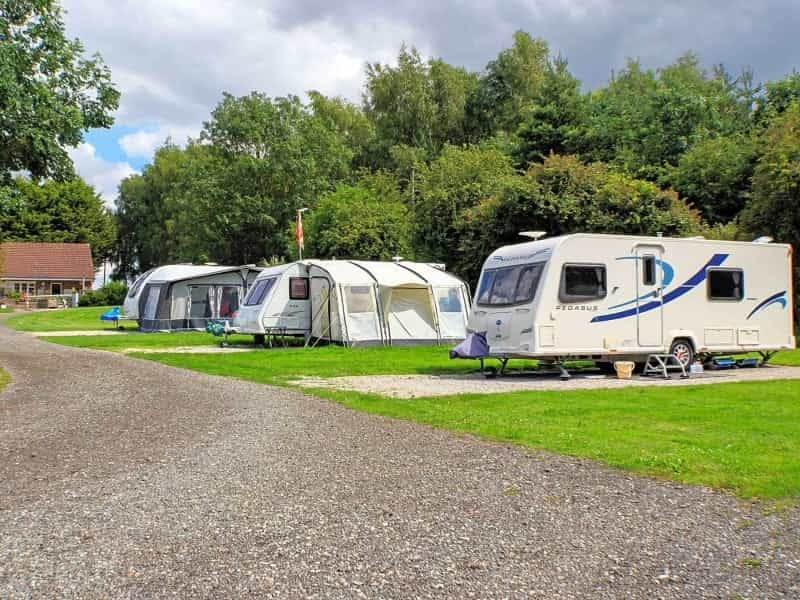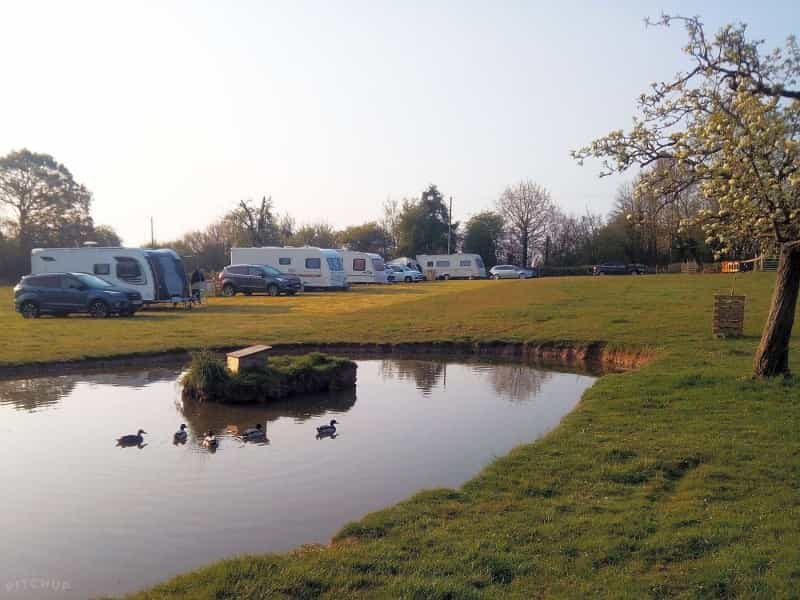How to tow a caravan
Recently bought a caravan and planning to take it out on its first trip? Or are you hiring a caravan and keen to make sure everything runs smoothly? If you’ve never towed before or are relatively new to caravanning, this guide is for you. It may also be relevant for holidaymakers planning a break with a trailer tent. Our goal is to take the fear factor out of towing so you can relax, explore new destinations and experience the full freedom that a caravan holiday offers.

What kind of caravan can I tow?
How much you can tow used to depend on your driving licence and when you passed your driving test. However, as of late 2021, anyone with a valid UK car licence can tow a caravan or trailer up to a maximum weight of 3,500kg. If your caravan/trailer exceeds this weight, you will need to take a special test.
Preparing your caravan
Before you even get behind the wheel, it’s very important to load your caravan correctly. Incorrect weight distribution can damage your luggage, your caravan’s interior and pose a risk to yourself and other road users.
To stay on the safe side, make sure you know your car’s kerb weight, its towing limit and the MTPLM (Maximum Technically Permitted Laden Mass) of your caravan (these figures should be available in the handbook or directly from the manufacturer). When you have these figures, calculate 85% of the kerb weight of the car and compare it to its towing limit. Take whichever figure is lower and make sure that it is equal or less than the MTPLM of the caravan.
Heavy items should be placed securely on the ground, with the heaviest items placed in the centre over the axle. Lighter items can be placed above ground level as long as they are secure.
You are now ready to connect your caravan to your car. For step-by-step advice on how to do this, see our guide to hitching your caravan to your car.

Checks before setting off
Tyre pressure: Check the tyre pressure for both your caravan and your tow car. For the caravan, the target pressure should be displayed in your handbook and/or on the sticker within the caravan itself. For your tow car, check the handbook to make sure your rear wheels are at the correct pressure for towing. For your car tyres, you may need to inflate when hitching up and deflate once you have arrived at your pitch and unhitched your caravan.
Tyre tread: This can easily be checked at the same time as checking the pressure. The legal minimum tread depth for caravan tyres is 1.6mm.
Inside the caravan: Make sure all windows, air vents, doors and cupboards are shut and locked.
Check your visibility: You must be able to see 20 metres behind the caravan and four metres either side of it. For almost all cars, this will mean that you need clip-on towing mirrors to reduce blind spots and maximise visibility.
Check the red lights at the rear of the caravan are working properly when you brake.
Make sure the jockey wheel (the wheel at the front of the hitch that the caravan rests on) has been raised and is not still engaged.
Finally, before you start driving, make sure that the caravan’s handbrake has been released.

Driving safely with a caravan
Now that you’re actually on the road, what are the rules? How do you make sure everything goes to plan? You’ll find answers to these questions, and more, below:
Passengers
It is illegal to allow passengers to ride in a caravan while it is being towed by a car. All passengers must remain in the tow car. While it is possible for pets to ride in the caravan while it is being towed, it is a better idea to have them in the car – especially for large dogs or other pets that are likely to try and move around during the journey.
Taking breaks
Taking breaks is especially important when driving with a caravan, as towing may mean that even experienced drivers require more concentration. Official government advice recommends taking a 15-minute comfort break every two hours, but if you’re new to towing you should stop for a break as soon as you feel your energy levels waning.
Speed limits
Cars that are towing caravans are subject to a lower speed limit. On roads that are signed as having a speed limit of 60mph (such as single carriageways), cars towing caravans must travel at no more than 50mph. On motorways and dual carriageways, where the speed limit is usually 70mph, tow cars must drive at 60mph or below.
Choosing the correct lane
If you are travelling on a motorway with three or more lanes, it is against the Highway Code to drive in the right-hand (‘outside’) lane. Stick to the slow lanes and allow vehicles travelling faster to overtake you if necessary.
Tail swing
Always approach corners wide and slowly.
Because of the effect known as tail swing, when taking a sharp left-hand turn, your caravan may partly cross over into the right-hand lane. To anticipate this, signal your intention to turn early, move out so you're wide of the kerb and keep an eye out for oncoming traffic in the right-hand lane. Only turn when it is safe to do.
Tail swing means that you should also approach roundabouts slightly differently than you usually would. The caravan will cut closer to the junction than the front wheels of your tow car, so you’ll need to take a wider route to make sure that you don’t hit an object or vehicle on the inside of the corner.
Snaking and pitching
Snaking refers to when the caravan is swinging from side to side while being towed.
Pitching refers to when the caravan’s front end moves up and down and this can be felt within the tow car.
To avoid these problems and keep control of the caravan, make sure that you load your caravan carefully and do not tow more weight than is recommended for your car. You should also use a hitch head stabiliser if your caravan has one – this is an adjustable plastic clamp on the top of the hitch that grabs the sides of the tow ball to reduce pitching.
Even if you have taken the above steps, snaking and/or pitching may occur when your caravan is caught in crosswinds. Make sure you stay in control by bringing down your speed (by taking your feet off the accelerator – do not apply the brakes as this could make the situation worse) and keep steering in a straight line.
Braking and accelerating
Braking and accelerating will both take much longer than when you are not towing. Anticipate this in advance and make your intentions clear to other road users so they do not misinterpret your behaviour.
Reversing with a caravan
When reversing with a caravan, somewhat counterintuitively, you need to steer in the opposite direction. If you want the caravan to move to your right, you will need to steer to your left.
Use your extension mirrors to check for obstacles behind you and move slowly so you can correct your course if needed. The first few times you reverse a caravan, it may be useful to have a passenger help you out by standing outside the vehicle and checking your blind spots.

Planning your first trip
Towing can be daunting for beginners, but we hope we’ve demonstrated that there’s nothing to worry about as long as you take things one step at a time.
Once you’ve had a test drive around your local area, have a look at our top-rated caravan sites to find a pitch with the features and facilities you’re looking for. With hundreds of destinations for touring caravans in the UK and beyond, you’re sure to find somewhere worth exploring.
FAQs
What size caravan can I tow with my licence?
As of late 2021, as long as you are towing less than 3,500kg, it does not matter when you passed your driving test.
Can passengers ride in a caravan while it is being towed?
No – this is illegal and highly dangerous. Caravans are not designed to endure high-impact forces in the way that cars are.
What is the speed limit while towing a caravan?
On single carriageways, the speed limit for tow cars is 50mph instead of the usual 60mph. On motorways and dual carriageways, tow cars must travel at 60mph or less instead of the usual 70mph.
Do I need special mirrors to tow a caravan?
Yes – clip-on towing mirrors are required by law when towing a caravan. They must be removed when you are not towing.
Do I need a 4x4 to tow a caravan?
In most cases no, although four-wheel drive may be helpful with larger caravans and will help with acceleration.
Can caravans be towed on the motorway?
Yes, although if you are travelling on a motorway with three or more lanes, it is against the Highway Code to drive in the right-hand (‘outside’) lane.

